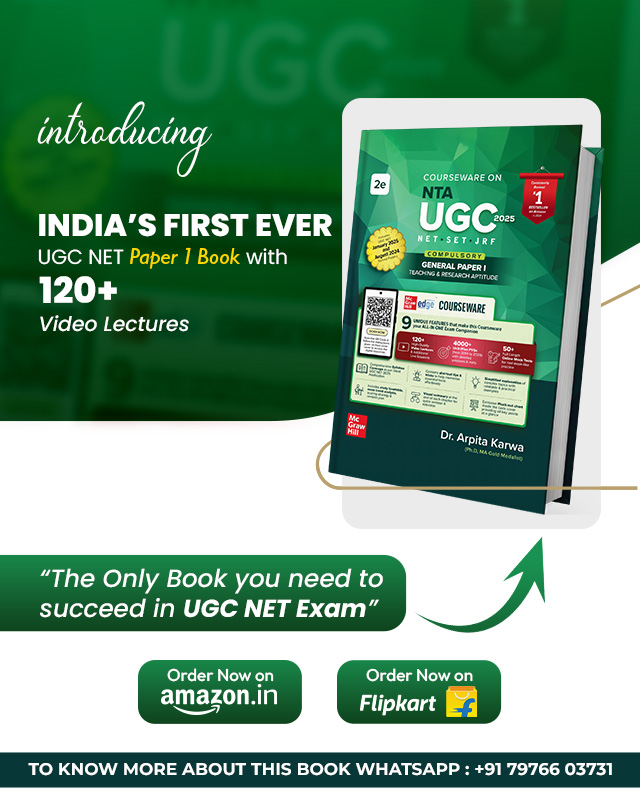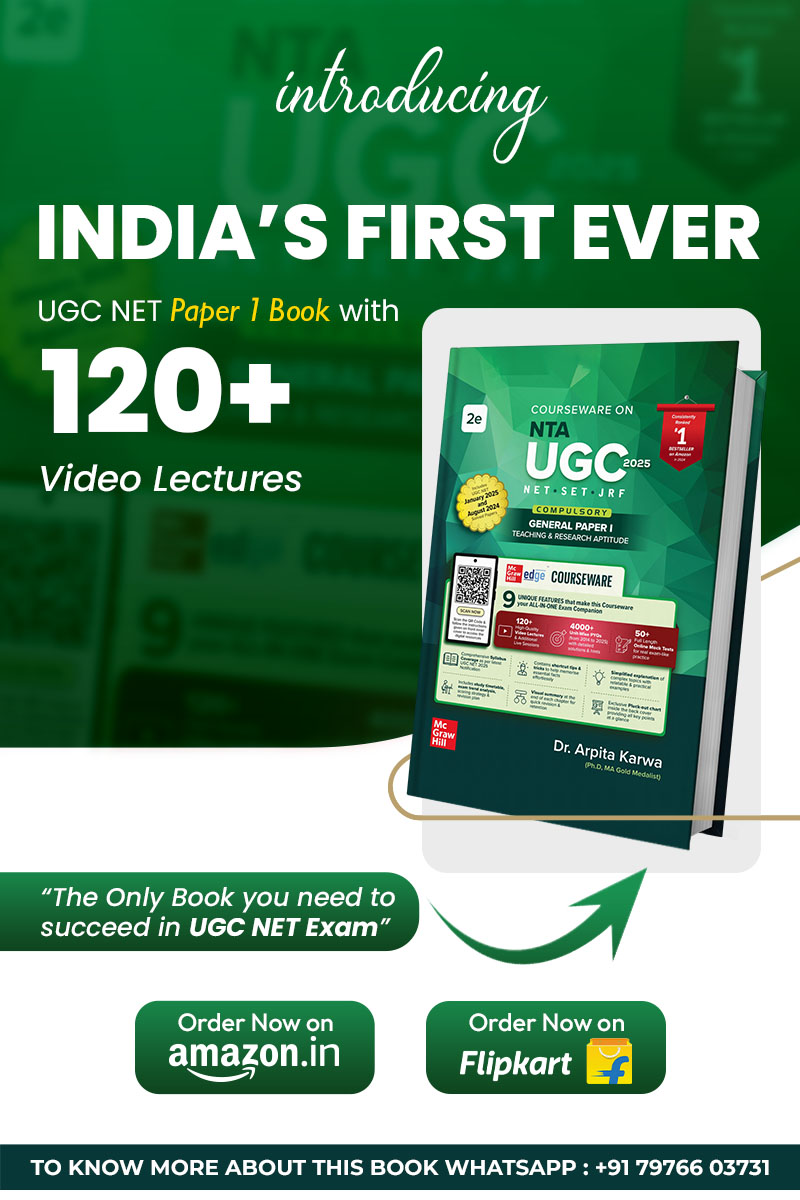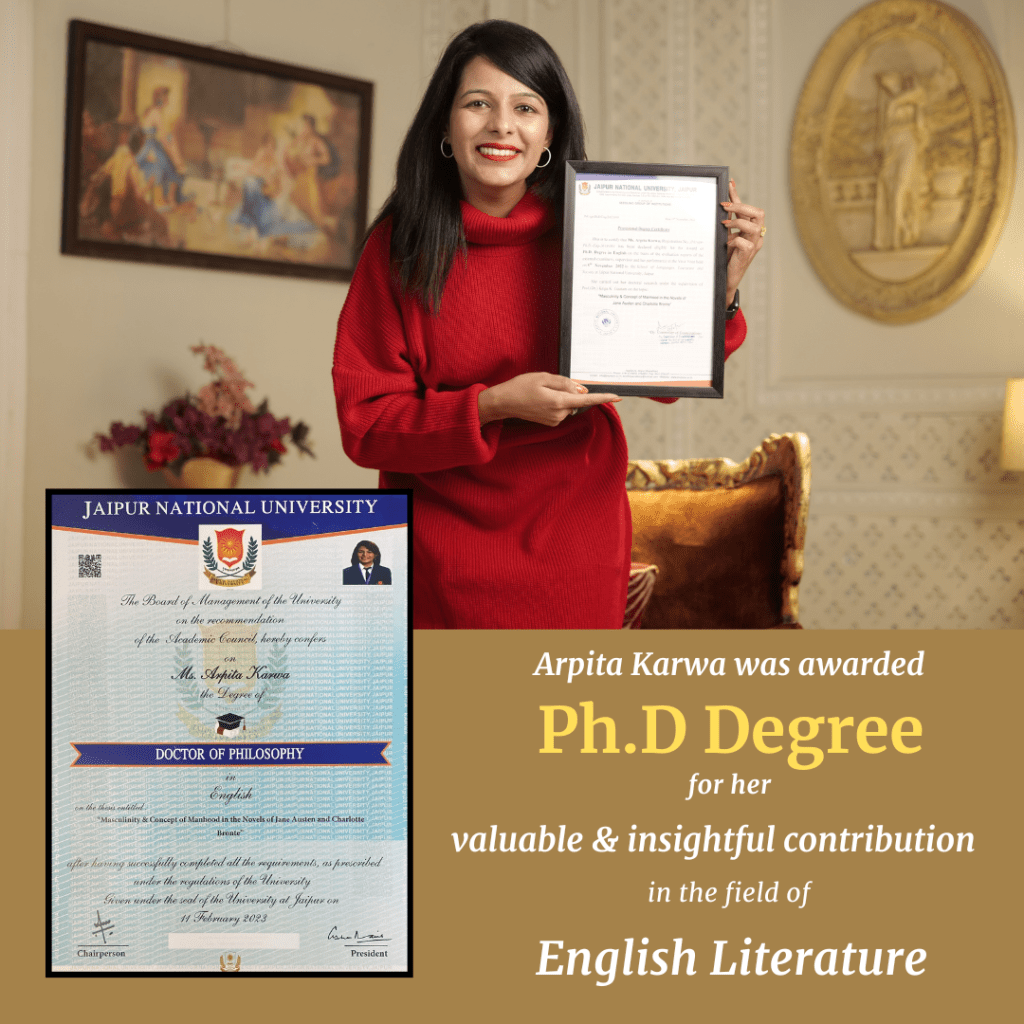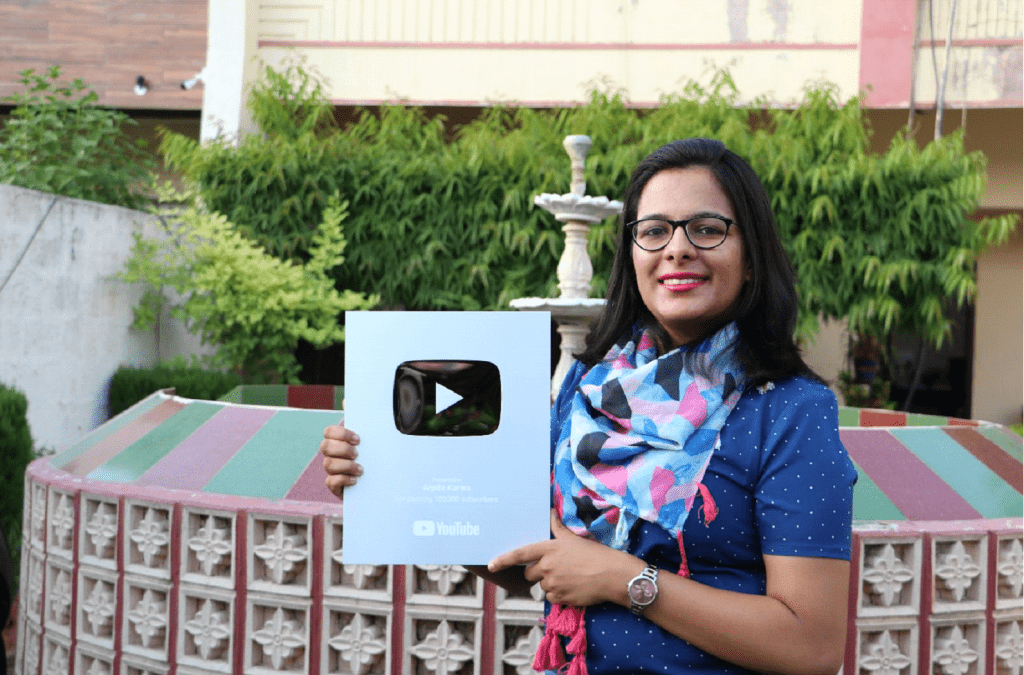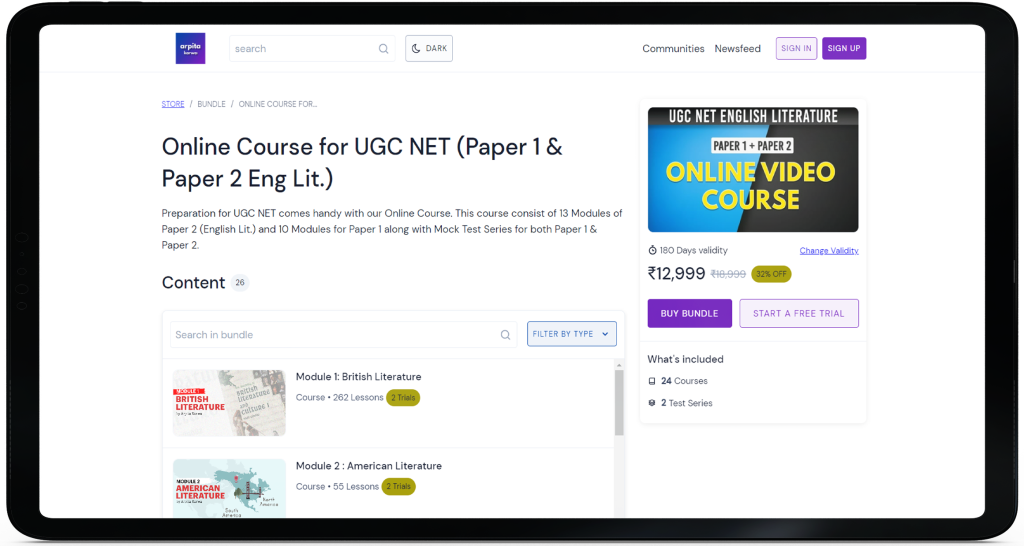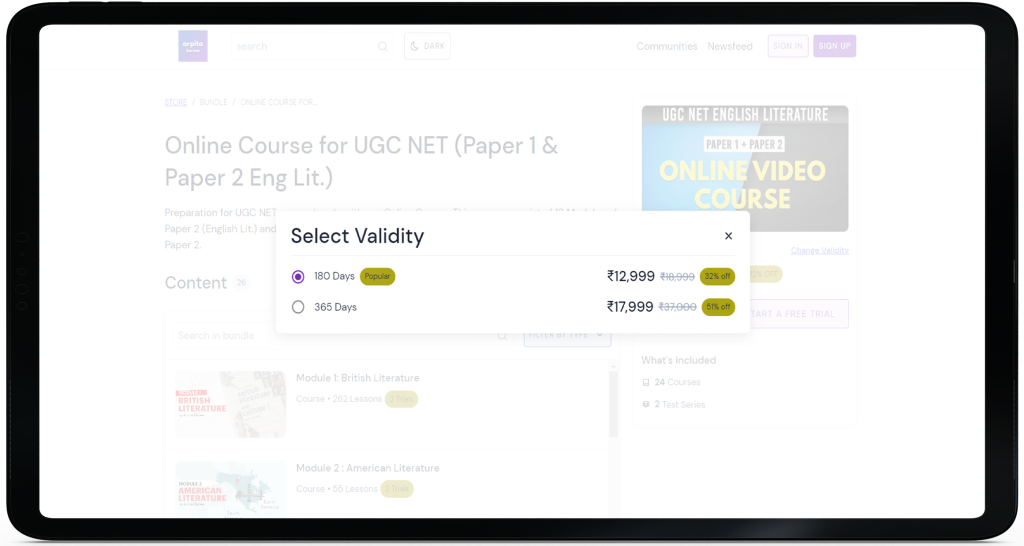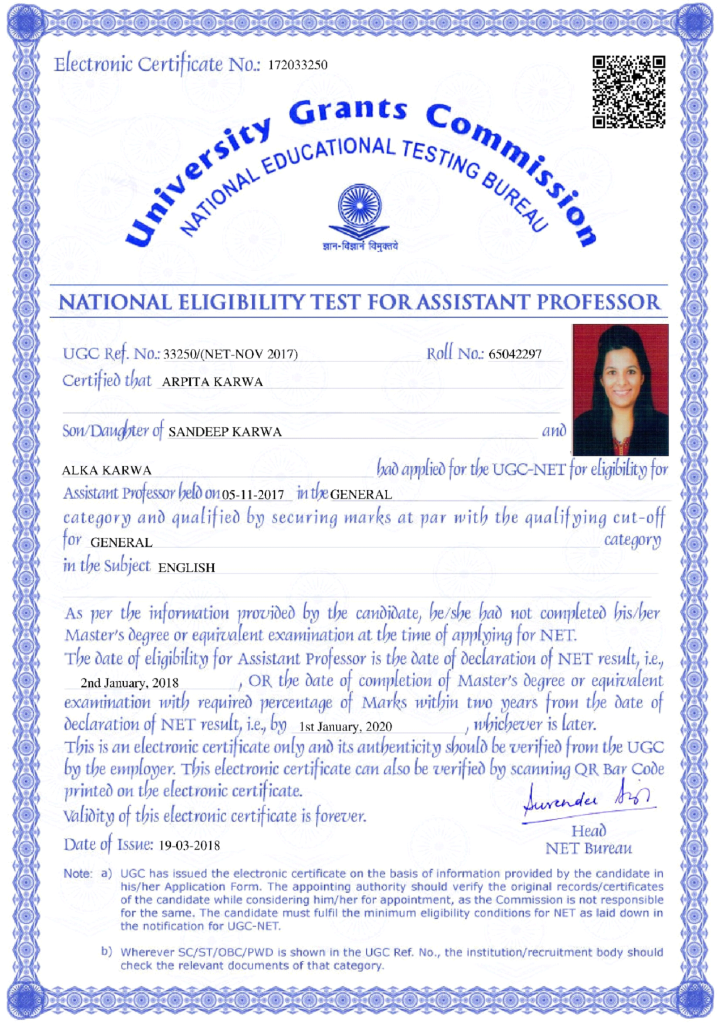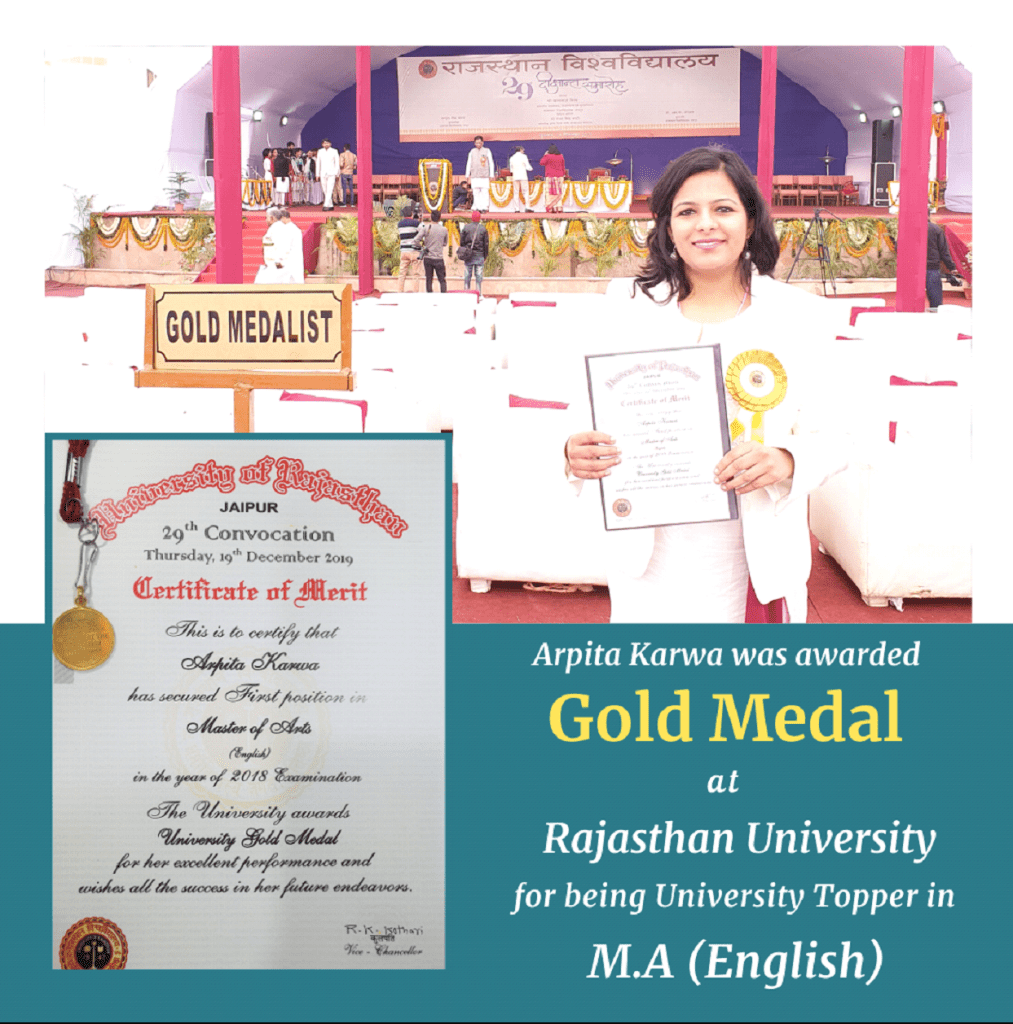Paper 3- December 2014
October 19, 2022 2023-12-07 13:12Paper 3- December 2014
Paper 3- December 2014
1. This work was a satire in Ottava rima, attacking George III and Robert Southey.
Identify the poem :
(A) Dunciad
(B) The Vision of Judgment
(C) Childe Harold’s Pilgrimage
(D) Alastor
Answer: B
2. Here’s a famous exchange from Arthur Conan Doyle’s Silver Blaze :
‘Is there any point to which you would wish to draw my attention ?’
‘To the curious incident of the dog in the night-time.’
‘The dog did nothing in the night-time.’
What was Sherlock Holmes’ response ?
(A) ‘Nothing ? Nothing at all ? Rather unbelievable.’
(B) ‘That was the curious incident.’
(C) ‘Anything else, at all ?’
(D) ‘That sounds rather curious, don’t you think ?’
Answer: B
3. “The shrill, demented choirs of waiting shells, And bugles calling for them from sad shires.” These lines are from Wilfred Owen’s :
(A) “Strange Meeting”
(B) “Futility”
(C) “Anthem for Doomed Youth”
(D) “Duke et Decorum Est”
Answer: C
4. In Aphra Behn’s Oronooko, how does the titular character die ?
(A) He disembowels himself.
(B) He is whipped to death.
(C) He is hanged in the public square.
(D) He is cut to pieces slowly by the executioner.
Answer: D
5. The narrative of this novel is a meticulous, present-tense account of a woman with a death-wish who plots the circumstances of her own violent murder. Identify the novel.
(A) Iris Murdoch’s A Fairly Honourable Defeat
(B) Muriel Spark’s The Driver’s Seat
(C) Doris Lessing’s Children of Violence
(D) Angela Carter’s The Passion of the New Eve
Answer: B
6. The library where the “Battle of Books” takes place is _______.
(A) St. James’ Library
(B) King’s Library
(C) Sir William’s Library
(D) Christ Church Library
Answer: B
7. In Sophocles’ Oedipus Rex the first scene finds Oedipus
(A) in conversation with a priest
(B) in consultation with a general
(C) giving audience to an ambassador
(D) in consultation with a minister
Answer: A
8. Who among Shakespeare’s contemporaries did not write tragedies ?
(A) Thomas Kyd
(B) John Lyly
(C) Christopher Marlowe
(D) Ben Jonson
Answer: B
9. The Kite Runner, a novel by Khaled Hosseini tells the story of ________.
(A) Ahmed
(B) Nadira
(C) Amir
(D) Amourrah
Answer: C
10. Thomas Babington Macaulay, the writer of the infamous Minute of 1835, finds a mention in Salman Rushdie’s
(A) Midnight’s Children
(B) Shame
(C) The Moor’s Last Sigh
(D) Fury
Answer: C
11. The issue of privileging speech over writing was taken up for discussion in Plato’s :
(A) Ion
(B) Republic Book III
(C) Republic Book X
(D) Phaedrus
Answer:D
12. ‘The Medium is the Message’ is a concept given by
(A) Ernest Hemingway
(B) Sylvia Plath
(C) Seymour Hersh
(D) Marshal McLuhan
Answer: D
13. Seamus Heaney’s famous poem “Digging” forms a part of his celebrated collection called
(A) North
(B) Death of a Naturalist
(C) Field Work
(D) Door into the Dark
Answer: B
14. The first major report on The Teaching of English in England was published in 1921. It is known as ________, named after the Chair, Board of Education, _______.
(A) the Newbolt Report; Sir Henry Newbolt
(B) the Wood’s Despatch; Charles Wood, Lord Halifax
(C) the Chatham Report; Earl John Chatham
(D) the Landow Document; Sir George Landow
Answer: A
15. Who first developed the notion of ‘competence’ in language studies ?
(A) Dell Hymes
(B) Noam Chomsky
(C) Leech and Svartvik
(D) Henry Sweet
Answer: B
16. The fruit was eaten. The fruit is ripening. Which of the following statement(s) is/are correct ?
(1) English has two kinds of participle : the present and the past. (2) English has three kinds of participle : the present, the past and the future. (3) The first sentence here is an example of a verb in past participle. (4) The first sentence here is an example of a verb in the perfect tense. (5) The second sentence here is an example of a verb in present participle. (6) The second sentence here is an example of a verb in the continuous tense.(A) 2, 4, 6 are correct.
(B) 1, 5, 6 are correct.
(C) 1, 3, 5 are correct.
(D) 3, 4, 5 are correct.
Answer: C
17. In 1722 the Crown awarded a certain English merchant a patent to manufacture copper coins for Ireland. Jonathan Swift intervened by way of composing a series of letters in response, better known as The Drapier’s Letters. Who was the merchant ?
(A) Isaac Bickerstaff
(B) William Bickerstaff
(C) William Wood
(D) William Sacheverell
Answer: C
18. “While the world moves In appentency on its metalled way Of time past and time future” These lines are from :
(A) “Little Gidding”
(B) “Dry Salvages”
(C) “Burnt Norton”
(D) “East Coker”
Answer: C
19. The following is the stage-description of an opening scene of a famous modern play : A basement room. Two beds, flat against the back wall. A serving hatch, closed, between the beds. A door to the kitchen and lavatory, left. A door to a passage, right. Identify the play :
(A) The Importance of Being Earnest
(B) Travesties
(C) The Dumb Waiter
(D) Look Back in Anger
Answer: C
20. ‘Homonyms’ are words that _______
(A) are pronounced differently but have the same meaning.
(B) refer to both the male and female of the human species.
(C) are spelt similarly but have different meanings.
(D) refer to people who live in houses with similar structures.
Answer: C
21. Match the columns :
Shakespearean Actors Period
I. David Garrick 1. The 19th century
II. John Gielgud 2. The 18th century
III. Henry Irving 3. The Restoration
IV. Thomas Betterton 4. The 20th century
I II III IV
(A) 2 4 1 3
(B) 4 2 1 3
(C) 3 4 1 2
(D) 2 3 4 1
Answer: A
22. In his “Structure, Sign, and Play in the Discourse of the Human Sciences,” Derrida is all praise for the bricoleur whom Levi-Strauss sees as a supreme methodologist, “someone who uses ‘the means at hand’.” Who does Levi-Strauss contrast bricoleur with in terms of method and approach ?
(A) The Botanist
(B) The Anthropologist
(C) The Engineer
(D) The Semiotician
Answer: C
23. Heinrich Böll has something to say, and not of course merely something about the Germans. He says it several times. A common weakness of writers with something to say is their inability to understand that saying it four times is not necessarily four times as effective as saying it once. But to have something to say – how rare this is ! – D. J. Enright, “Three New Germans”. From a reading of the above, the reader can deduce :
I. Enright mildly disapproves of Heinrich Böll’s saying not merely something about Germans.
II. Enright is disappointed that Heinrich Böll has practically nothing to say about people other than Germans.
III. Enright agrees that Heinrich Böll shares a weakness with writers who prefer saying something four times to saying it once.
IV. Enright does not believe that saying something four times will necessarily make the same effective.
The right combination, according to the code, is
(A) I and II
(B) II and III
(C) III and IV
(D) I and IV
Answer: C
24. Michel Foucault’s earlier “archaeological” study is found in
(A) Power/Knowledge
(B) Social Theory and Transgression
(C) The Birth of the Clinic
(D) Beyond Structuralism and Hermeneutics
Answer: C
25. Invisible Man by Ralph Ellison is widely recognized as a masterpiece. It is also one of the finest examples of
(A) science fiction
(B) picaresque novel
(C) coming-of-age novel
(D) crime thriller
Answer: C
26. Match the following correctly :
1. Premashram
2. The Cat and Shakespeare
3. Coolie
4. Nagamandala
I. Mulk Raj Anand
II. Raja Rao
III. Prem Chand
IV. Girish Karnad
I II III IV
(A) 3 2 4 1
(B) 2 3 1 4
(C) 3 2 1 4
(D) 4 3 2 1
Answer: C
27. From which of Sheridan’s plays the following extract is taken ?
Lady Sneerwell : Why truly Mrs. Clackitt has a very pretty talent and a great deal of industry.
Snake : True, Madam, and has been tolerably successful in her day. To my knowledge she has been the cause of six matches being broken off and three sons disinherited, of four forced elopements ….
Lady Sneerwell : She certainly has talents but her manner is gross.
(A) The Rivals
(B) The School for Scandal
(C) St. Patrick’s Day
(D) The Critic
Answer: B
28. Who, from among the following, has NOT been discussed by Simon-de-Bevoir in “The Myth of Woman in Five Authors” in The Second Sex ?
(A) Montherlant
(B) Lawrence
(C) Stendhal
(D) Kafka
Answer: D
29. In a collection of essays Orhan Pamuk shares how he writes his novels, tells about his friendship with his daughter, talks about his loneliness and happiness. Identify the text :
(A) Other Colors
(B) The Silent House
(C) The Black Book
(D) The White Castle
Answer: A
30. Two of the following plays won the Sultan Padamsee Prize for Indian plays in English :
I. Princes
II. Where There’s a Will
III. Larins Sahib
IV. Doongaji House
The right combination according to the code is :
(A) III and IV
(B) I and III
(C) II and III
(D) I and IV
Answer: A
31. Who among the following is NOT an Australian writer ?
(A) Morris West
(B) Patrick White
(C) Thomas Keneally
(D) Bill Pearson
Answer: D
32. After Independence, Mulk Raj Anand, wrote a number of semi-autobiographical works to narrate chunks of his own life through a fictional persona. The name he gave this persona is _______.
(A) Lal Singh
(B) Krishan Chander
(C) Puran Singh
(D) Rahul Singh
Answer: B
33. What a mockery this.
Of history, the past and that to come !
Now do I feel how all men are deceived,
Reading of nations and their, in faith,
Faith given to vanity and emptiness …
The prelude
The above extract is from
(A) Book 9 Residence in France
(B) Book 7 Residence in London
(C) Book 3 Residence in Cambridge
(D) Book 4 Summer Vacations
Answer: A
34. While foregrounding the marginal presence of women in history in A Room of One’s Own, Virginia Woolf refers to ______ History of England.
(A) Campbell’s
(B) Trevelyan’s
(C) Sander’s
(D) Carter’s
Answer: B
35. Salonie is a play written by Oscar Wilde written in
(A) English
(B) Irish
(C) French
(D) Italian
Answer: * (Marks given to all)
36. In More’s Utopia, the fictional traveller Raphael Hythloday’s second name in Greek means
(A) Dispenser of Justice
(B) Dispenser of Nonsense
(C) Dispenser of Grace
(D) Dispenser of Mercy
Answer: B
37. “You do not dwell in me nor I in you however much I pander to your name” These lines from Geoffrey Hill’s “Lachrimae” address
(A) Christ
(B) The Devil
(C) The poet’s beloved
(D) The poet’s enemy
Answer: A
38. The author of Black Skin, White Masks is
(A) Ngugi wa Thiong’o
(B) Frantz Fanon
(C) Richard Wright
(D) Martin Luther King (Jr.)
Answer: B
39. Match the following :
Poet Bird
I. John Keats
II. P.B. Shelley
III. G.H. Hopkins
IV. Ted Hughes
1. Hawk
2. Falcon
3. Skylark
4. Nightingale
I II III IV
(A) 4 3 2 1
(B) 4 3 1 2
(C) 3 4 2 1
(D) 3 4 1 2
Answer: A
40. Who of the following has written the novel The Return ?
(A) Bapsi Sidhwa
(B) V.S. Naipaul
(C) K. S. Maniam
(D) Pankaj Mishra
Answer: C
41. Who among the following is a well-known Neo-Aristotelian critic ?
(A) R.P. Blackmur
(B) John Crowe Ranson
(C) R.S. Crane
(D) Lionel Trilling
Answer: C
42. Assertion (A) : The act of reading a text is both determinate and indeterminate.
Reason (R) : Since our reading includes both a sense of the unity of the narrative held in
place at the end and the different wishes and guesses made along the way.
(A) Both (A) and (R) are true and (R) is the true explanation of (A).
(B) Both (A) and (R) are true, but (R) is not the true explanation of (A).
(C) (A) is true, but (R) is false.
(D) (A) is false, but (R) is true.
Answer: A
43. Girish Karnad’s Hayavadana, originally in Kannada, has been translated into English by
(A) U.R. Ananthamurthy
(B) By the playwright himself
(C) G.S. Amur
(D) A.K. Ramanujan
Answer: B
44. Edward Said’s well-known book Orientalism was published in
(A) 1978
(B) 1968
(C) 2008
(D) 1988
Answer: A
45. “To the Memory of my Beloved, the Author Mr. William Shakespeare : And What He Hath Left Us” is an ode composed by
(A) John Milton
(B) Ben Jonson
(C) Andrew Marvell
(D) John Suckling
Answer: B
46. Call me Ishmail Tonight is written by
(A) A.K. Ramanujan
(B) Agha Shahid Ali
(C) Saleem Peeradina
(D) Nissim Ezekiel
Answer: B
47. “All fiction for me is a kind of magic or trickery – a confidence trick.” The statement has been made by
(A) Angus Wilson
(B) Anthony Powell
(C) John Fowles
(D) George Orwell
Answer: A
48. Here is a list of American words and word-makers. Match the following :
I. H.L. Mencken
II. Philip Wylie
III. Jack Conway
IV. Sinclair Lewis
1. Babbit
2. Yes man
3. Bible belt
4. Monism
I II III IV
(A) 4 3 2 1
(B) 3 4 1 2
(C) 3 4 2 1
(D) 4 3 1 2
Answer: * (Marks given to all)
49. Which of the following in Jacques Derrida’s epigraph to his “Structure, Sign and Play in the Discourse of the Human Sciences” ?
(A) More body, hence more writing. ……. Helene Cixous.
(B) We need to interpret interpretations more than to interpret things. ……… Michel Eyquem de Montaigne.
(C) But unlike philosophical reflection, …. the reflections we are dealing with here concern rays whose only source is hypothetical … Claude Levi-Strauss
(D) If Cleopatra’s nose had been shorter the whole history of the world would have been different. ………Blaise Pascal.
Answer: B
50. In Mann’s Death in Venice, death of the protagonist occurs
(A) in a bar
(B) in a beach
(C) in a church
(D) on the highway
Answer: B
51. Two among the following poets wrote the “Village” poems that address the perennial theme of rural poverty :
I. Oliver Goldsmith
II. William Collins
III. Samuel Johnson
IV. George Gabbe
The right combination according to the code is
(A) I and III
(B) II and III
(C) I and IV
(D) I and II
Answer: * (Marks given to all)
52. In which of the following works Yeats developed his theory of ‘gyres’ ?
(A) “A Vision”
(B) “The Secret Rose”
(C) “John Sherman and Dhoya”
(D) “The Celtic Twilight”
Answer: A
53. Mystery and Miracle plays in English were based on ______.
(A) English folklore
(B) English legends
(C) Biblical stories
(D) Anglo-Saxon myths
Answer: C
54. When we rewrite a piece of discourse from one script into another, it is called ________.
(A) Translation
(B) Transliteration
(C) Transcreation
(D) Transformation
Answer: B
55. “No wonder then.” Explain.
(A) No wonder that the words here begin to mean.
(B) No wonder that you now find the words menacing.
(C) No wonder that the words find you menacing.
(D) No wonder the words still mean and are tame.
Answer: * (Marks given to all)
56. The term “womanism” was first used by
(A) Helene Cixous
(B) Gayatri Spivak
(C) Kate Millet
(D) Alice Walker
Answer: D
57. Two among the following critics have dealt with the reproduction of motherhood in feminist theory :
I. Nancy Chodorow
II. Judith Fetterley
III. Catherine R. Stimpson
IV. Carol Gilligan
The right combination according to the code is
(A) Iand II
(B) IIand IV
(C) I and IV
(D) III and IV
Answer: C
58. Flowers is a short play written by
(A) Mahesh Dattani
(B) Asif Currimbhoy
(C) Girish Karnad
(D) Paoli Sengupta
Answer: C
59. Match the columns :
Character Novel
I. Lady Dedlock
II. Lady Bertram
III. Lady Harriet
IV. Lady Jane
1. Vanity Fair
2. Wives and Daughters
3. Mansfield Park
4. Bleak House
I II III IV
(A) 4 2 3 1
(B) 3 2 1 4
(C) 4 3 2 1
(D) 3 4 1 2
Answer: C
60. “The Books You Needn’t Read, the Books Made For Purposes Other Than Reading, Books Read Before You Open Them Since They Belong To The Category of Books Read Before Being Written …”
The above extract is taken from
(A) Jorge Luis Borges’s “The Library of Babel”
(B) Italo Colvino’s If on a Winter’s Night a Traveller
(C) Umberto Eco’s The Name of the Rose
(D) Francis Bacon’s “Of Studies”
Answer: B
61. Listed below are the titles of novels and the sources to which they are aligned by readers.
Match them appropriately :
1. Daniel Defoe’s Robinson Crusoe
2. Charlotte Bronte’s Jane Eyre
3. R.M. Ballantyne’s The Coral Island
4. Charles Dickens’s Great Expectations
I. Peter Carey’s Jack Maggs
II. J.M. Coetzee’s Foe
III. Jean Rhys’s Wide Sargasso Sea
IV. William Golding’s Lord of the Flies
I II III IV
(A) 4 1 3 2
(B) 4 3 1 2
(C) 4 1 2 3
(D) 4 2 1 3
Answer: C
62. Identify the right chronological sequence :
(A) The Game of Chess – Volpone – The Duchess of Malfi – The City Madam
(B) The City Madam – The Duchess of Malfi – Volpone – A Game of Chess
(C) Volpone – The Duchess of Malfi – A Game of Chess – The City Madam
(D) The Duchess of Malfi – Volpone – A Game of Chess – The City Madam
Answer: C
63. ‘Nasal tone’ in speech is a distinguishing feature of _______.
(A) British English
(B) Scottish English
(C) Australian English
(D) American English
Answer: D
64. Which of the following writers did NOT receive the Nobel Prize for Literature ?
(A) Wole Soyinka
(B) Chinua Achebe
(C) J. M. Coetzee
(D) Nadine Gordimer
Answer: B
65. The Decline and Fall of the Roman Empire by Edward Gibbon is a significant work in ______ volumes.
(A) 3
(B) 4
(C) 5
(D) 6
Answer: D
66. The first novel written by Graham Greene is
(A) Stamboul Train
(B) England Made Me
(C) The Heart of the Matter
(D) The Man Within
Answer: D
67. From among the Canterbury pilgrims, which group would qualify as the ‘upper class’ ?
(A) The Pardoner, The Miller, The Nun’s Priest
(B) Franklin, Parson, Wife of Bath
(C) The Knight, The Squire, The Prioress
(D) The Reeve, The Manciple, The Clerk
Answer: C
68. Plagiarism is a well-known word and concept in academic circles. The word plagiarius in Latin, however, meant
(A) a trickster, a cheat
(B) a quack, a swindler
(C) a loafer, a lout
(D) a torturer, a plunderer
Answer: * (Marks given to all)
69. What superstition around the Eve of St. Agnes is crucial to an understanding John Keat’s famous poem ?
(A) If a virgin performed the proper ritual on St. Agnes’ Eve, she would dream of her future husband.
(B) If a virgin performed the proper ritual on St. Agnes’ Eve, she would marry her lover.
(C) If a married woman performed the proper ritual on St. Agnes’ Eve, she would be reunited with her husband.
(D) If a woman performed the proper ritual on St. Agnes’ Eve, she would dream of her future lover.
Answer: A
70. Identify the person who sets himself up as the ‘Knight’ with a pestle rather than a sword in
the play The Knight of the Burning Pestle :
(A) Ralph
(B) Tim
(C) George
(D) Squire
Answer: A
71. Works like The Earthly Paradise, Dante and His Circle, Goblin Market and Other Poems and the journal, The Germ are associated with ________.
(A) the Pre-Raphaelites
(B) Higher Criticism
(C) the Cavalier Poets
(D) the Pre-Romantics
Answer: A
Read the following poem and answer questions (72 to 75 ) :
A Bird came down the Walk –
He did not know I saw –
He bit an Angleworm in halves
And ate the fellow, raw,
And then he drank a Dew
From a convenient Grass –
And then hopped sidewise to the Wall
To let a Beetle pass –
He glanced with rapid eyes
That hurried all around –
They looked like frightened Beads, I thought –
He stirred his Velvet Head
Like one in danger, Cautious,
I offered him a Crumb
And he unrolled his feathers
And rowed him softer home –
Than Oars divide the Ocean,
Too silver for a seam –
Or Butterflies, off Banks of Noon
Leap, plashless as they swim.
72. Is “a convenient Grass” an example of “transferred epithet” ?
(A) Yes, it is. The “convenience” of grass is transferred from the bird to the poet who finds grass convenient of access.
(B) Yes, it is. The grass is not “convenient”, but is transferred from the bird who finds the grass convenient of access.
(C) No. It is a regular epithet.
(D) No. It is not an epithet in the strict sense.
Answer: B
73. Which of the following is NOT an example of kinetic imagery ?
(A) “unrolled his feathers”
(B) “hopped sidewise”
(C) “Velvet Head”
(D) “rowed him”
Answer: C
74. The poem stages an encounter between :
(A) the human and the non-human
(B) distrust of the non-human about the humans
(C) two old friends
(D) two old enemies
Answer: A & B
75. “Like one in danger …” Who is in danger ?
(A) The Bird
(B) The Poet
(C) The Angleworm
(D) Frightened Beads
Answer: A






